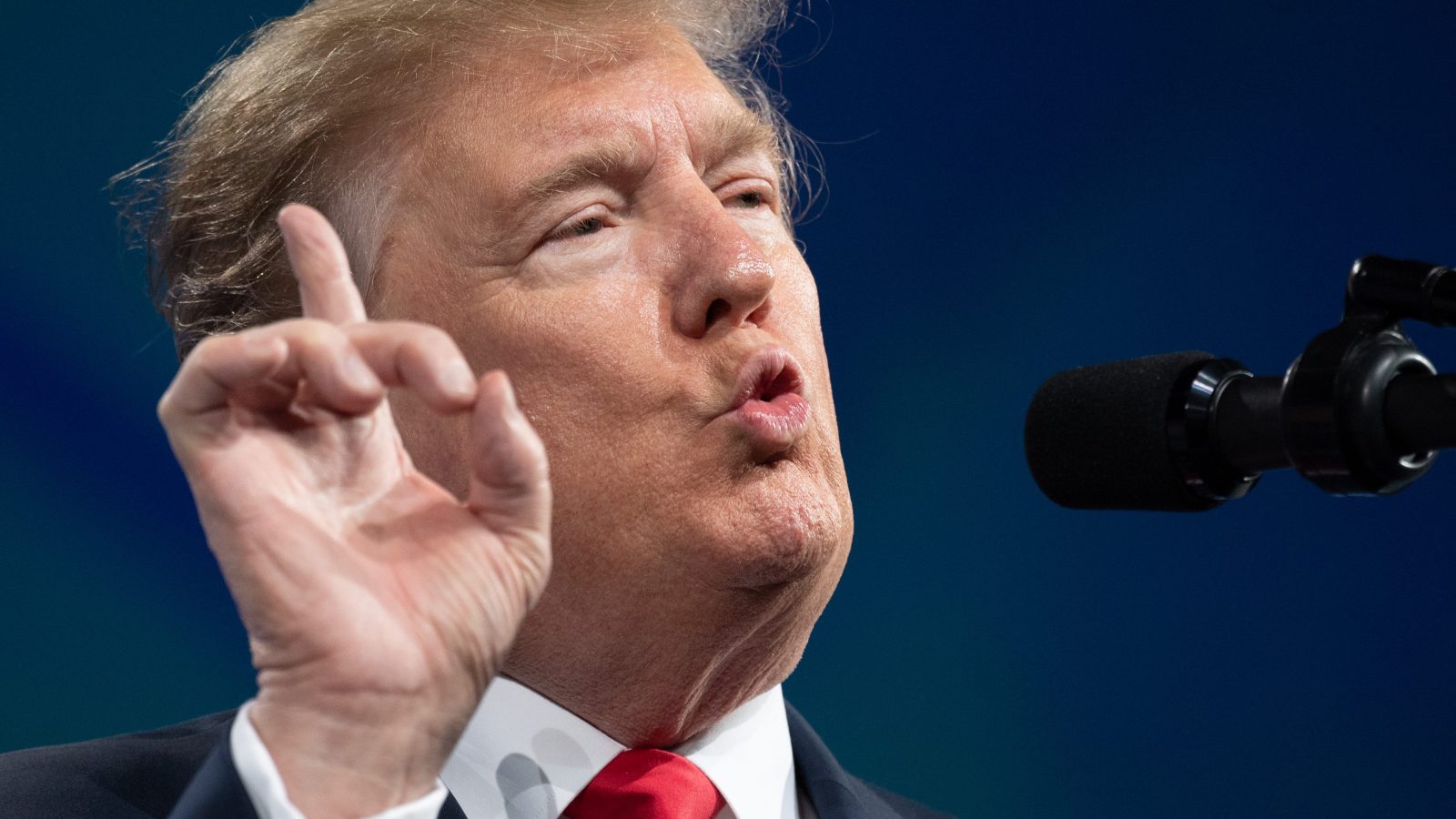This story was originally published by Slate and is reproduced here as part of the Climate Desk collaboration.
The Trump administration appears to be entering an alarming new stage of its attack on environmental protection. For the past two-plus years, it has used a retail approach, targeting Obama-era environmental rules one by one, trying to suspend compliance deadlines. This strategy has been met with limited success — more than 90 percent of the administration’s deregulatory efforts are being defeated in court, mostly due to sloppy agency actions.
But the Environmental Protection Agency has recently decided it will undertake a new approach in its effort to launch a wholesale attack on environmental regulation: It will change the way it collects and processes data, to provide better justification to dismantle the analytical foundation of its rules. These moves fly in the face of established economics and health sciences, and are inconsistent with the practices of administrations of both parties over four decades. The consequences for the environment and public health could be disastrous. But even as this approach might be more deliberate, these actions are unlikely to survive court challenges as well.
In the coming weeks, EPA plans to finalize vastly weakened versions of two important climate rules: a regulation controlling greenhouse gas emissions from power plants and standards to limit emissions from vehicles. The draft proposals for the Trump administration’s revisions to each of these rules were rife with analytical problems. In the power plant rule revision, the agency exercised its discretion in a manner that imposed billions of dollars’ worth of net harm on the American public. And the vehicle rule analysis is justified by claims about improved safety that rest on a wholly implausible and discredited economic analysis: It assumes that people will buy more — as opposed to fewer — vehicles as they become more expensive.
These failures are likely to reappear in the final rules as well, because the administration would be unable to justify its chosen actions without mangling the underlying analysis. As a result of these analytical failures, the rollbacks will be highly vulnerable to legal challenges and could add to the administration’s string of court losses.
Perhaps sensing urgency as these losses mount and the president’s term slips away, EPA appears to be pivoting from a retail to a wholesale attack on environmental standards. The agency has taken steps to begin an assault on the core foundations of environmental rule-making, signaling that it plans to alter the building blocks of the economic analysis that underlies its rules.
This new EPA attack features three dirty tricks that would erase the bulk of the benefits of critical environmental policies. These benefits—tens of thousands of averted deaths and hundreds of thousands of averted hospitalizations for strokes, heart attacks, and respiratory ailments—would, of course, still be there. The administration’s analysis would just pretend otherwise.
One EPA method involves calling into question the benefit of reducing pollution below the level of the national ambient air quality standards. Since the late 1970s, every administration — Republican and Democratic — has acknowledged that more stringent standards would provide greater health benefits. But earlier this month, William Wehrum, who oversees air quality for EPA, brazenly cast doubt on this long-established, science-based approach, telling the New York Times that counting these benefits in regulatory analyses “doesn’t make any sense” because the standards are set at “safe” levels, thereby implying that there can be no benefits at concentrations below the ones that EPA deems to be “safe.”
The problem with this understanding is that the Supreme Court has made clear that “the word ‘safe’ does not mean ‘risk-free.’” And, the United States Court of Appeals for the District of Columbia Circuit, which hears all the challenges to national ambient air quality standards, explained that in setting these standards, EPA must “‘select … standard levels that … reduce risks sufficiently to protect public health’” even while recognizing that “‘a zero-risk standard is [not] possible.’”
Wehrum should know better, or at least, he did not too long ago. He had previously served under President George W. Bush in senior positions in EPA’s air office between 2001 and 2007. During that time, in setting national ambient air quality standards for particulate matter and for ozone, EPA acknowledged that significantly higher benefits would accrue to the American people if the agency set the standards at levels more stringent that the ones it ultimately chose. The significant concern with this approach is that it will pave the way for EPA to support laxer standards without having to acknowledge that there is a cost to human life in doing so.
A second EPA trick involves concealing “co-benefits” — the indirect (and often enormous) benefits that result when a regulation reduces pollutants besides the ones being directly targeted by a particular regulation. EPA has launched an attack on co-benefits most directly as part of a revision to a finding related to a major mercury pollution rule. It’s trying to argue that the $37 billion to $90 billion in health co-benefits resulting from reductions in harmful particulate matter pollution don’t exist. If the administration’s goal is to obscure the value of environmental rules, undermining co-benefits will certainly help.
Co-benefits are so universally accepted as a worthwhile thing to consider that even the Trump EPA’s own handpicked Science Advisory Board recently highlighted the importance of considering them. Furthermore, a landmark guidance document on regulatory analysis issued by the Office of Management and Budget under George W. Bush explicitly requires the consideration of indirect benefits, though the EPA has consistently taken co-benefits into account since the Reagan administration.
Courts have also ruled that the indirect costs of regulations must be considered, so ignoring indirect benefits would create a lopsided and unjustifiable analysis. Indeed, counting indirect effects when they are negative but ignoring them when they are positive is the embodiment of the type of arbitrary and capricious conduct that the law categorically prohibits. But Trump’s EPA now wants to make this the norm.
EPA’s final dirty trick involves questioning foundational scientific studies on the harmful health impacts of particulate pollution. The detrimental health effects of particulate matter emissions are exceptionally well-documented. Two foundational studies performed in the 1990s found that people in cities with the highest levels of these pollutants were dying two years earlier than those in the least-polluted cities. The results were independently verified by two groups of outside researchers, and these studies have helped inform several major air pollution regulations.
But an EPA rule proposed last year would bar the consideration of studies like these, even though they are widely regarded as state-of-the-art, because their individual patient health data cannot be shared publicly, because of patient confidentiality rules. The administration’s approach would make it virtually impossible for regulatory policy to rely on epidemiological studies, a science-denying approach that is unlikely to find a receptive ear in the courts.
During the retail phase of the Trump administration’s attack on environmental rules, EPA cut corners, which led to most of its actions being overturned in court. This new wholesale attack on environmental rule-making is far more pernicious than the last. The Trump administration is actively trying to undermine and minimize science that has served as a universal baseline for decades. But once again, it’s pursuing its case sloppily, which means the courts are likely to see through these dirty tricks and stop them before they have a massively negative impact on public health.



